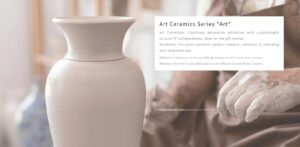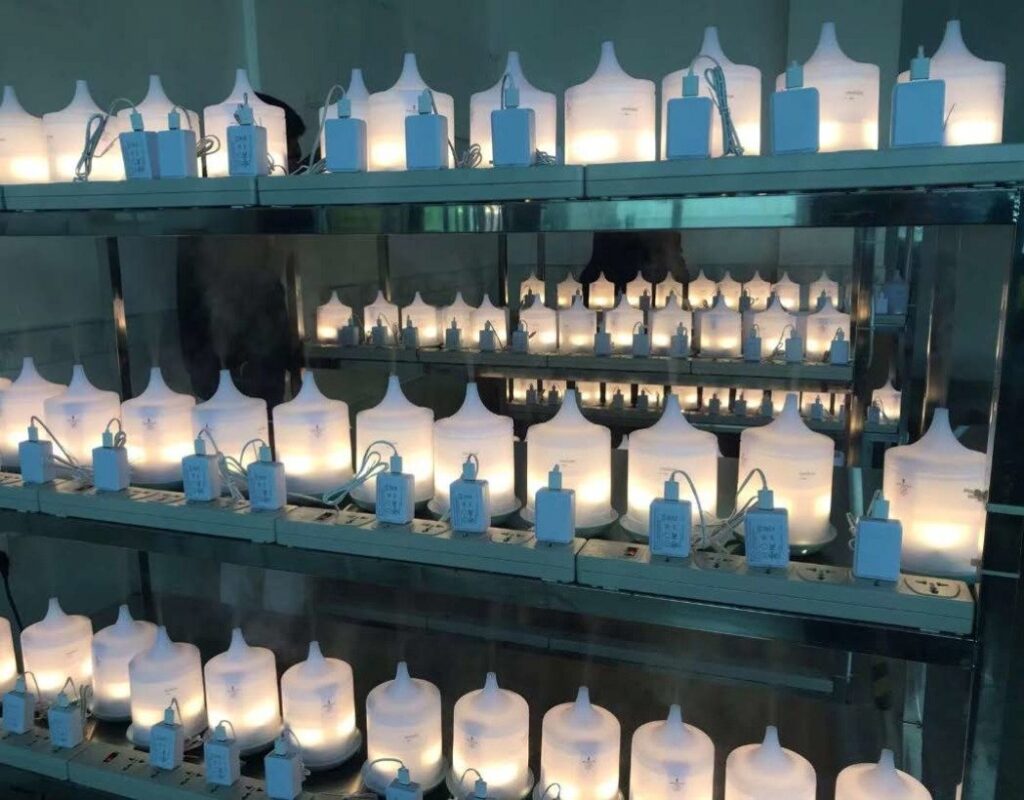
The Manufacturing Process of Aroma Diffuser
- December 5, 2023
Have you ever wondered the intricacies behind the creation of aroma diffusers? These elegant devices are more than just decorative elements; they enhance ambience and well-being. In an industry where precision, quality, and sensory appeal are paramount, the manufacturing process of aroma diffusers demands exceptional craftsmanship.
What lies at the heart of these fragrant wonders? Is it the design, the materials, or the technology employed? Indeed, each aspect plays a pivotal role. To truly grasp the essence of these devices, one must delve into the depths of their manufacturing journey.
This article will unfold the entire process of aroma diffuser manufacturing, offering insights from conception to completion. It will provide readers with a comprehensive understanding of the art and science behind these enchanting products.
Table of Contents

Order and Design
At first, the customer has to place the order; whether it’s a custom diffuser or choosing from existing designs, our approach is client-centred. For custom diffusers, we submit a custom design for customer approval. Once approved, our sales team officially places the order. The customer then pays a deposit to initiate the manufacturing process.
Appearance design:
- Organize customer product development needs and design appearance according to customer needs
- Product design needs to meet mould and structure requirements
Internal structure design:
- Make the structure design according to customer needs
- Check whether the ID picture is reasonable
- The structural design must meet mould-making, assembly, product function and relevant safety regulation
PCB design
- Conduct PCB program design and layout according to customer needs, which must meet product functions and related safety requirements.
Prototype Development and Testing
Following the design phase, our team builds and assesses prototypes, Carefully checking their structural and functional integrity. Based on these evaluations, we refine the 3D designs, ensuring each prototype meets our strict standards for quality and performance.
Inventory
Once the design is confirmed, our manufacturing team procures essential raw materials and components. In case of shortages, we’ll source these materials from reliable suppliers. Throughout this process, our quality assurance team diligently conducts thorough checks to ensure the superior quality of all materials.
Finishing the Checklist
After gathering all materials, our manufacturing team reviews the inventory to confirm everything is in place and accounted for. meanwhile, the final draft of the design receives its approval. While taking these steps, our quality assurance team strictly inspects the materials to ensure that they meet our high standards of quality, thus ensuring the completeness and excellence of the components before moving forward.
Mould Making
Once the customer approves the prototype sample, the project and mould engineers collaborate with the mould manufacturer to carefully review and refine the mould design, focusing on key aspects such as the glue feeding method and parting line. The mould drawings are then created based on product specifications.
Each processing stage is carefully planned, aligning with the mould schedule, and a detailed timeline is provided to the project engineer. At the same time, both project and mould engineers actively monitor the progress of mould making, ensuring each step complies with the pre-set schedule and meets the strict quality standards we uphold.
Manufacturing Process

This stage includes the core activities of the diffuser manufacturing process, where various materials are shaped into the final product. Each component is crafted individually, with a detailed checklist specifying the materials and methods for each part.
At this stage, the team leader outlines a timeline for manufacturing, from initiation to completion, along with a comprehensive operational plan. The process for creating different components of the diffuser is elaborated below:
1. PP Material Production:
Based on the mould design drawings, we use PP material that is resistant to essential oil corrosion for injection moulding. Quality is strictly controlled to avoid plastic shrinkage, deformation, and bubbles.
2. Ceramics Manufacturing
Made plaster moulds, mass-produced, and fired according to customer requirements. The ceramics process includes decals, engraving, hand-painting, electroplating, and spray painting. Ceramics have a higher defect rate, making them more expensive than plastic, but they offer a higher quality grade.
3. Glass Mold Production
Glass moulds for the diffusers include mouth-blown and machine-pressed mould. Processing options for glass include decals, colour spraying, sandblasting, formic acid treatments, and hand-painting.
4. PCB Production
Components are procured, and the motherboard is manufactured based on the PCB design. The process is divided into four parts: Surface Mount Technology (SMT), Dual In-line Package (DIP), testing, and packaging.
5. Fan Production:
Fan components are selected according to the runner design and then produced.
The manufacturing of each part, whether PP material, ceramics, glass, PCB, or fan, is carried out with the utmost care to ensure that the final product meets and exceeds customer expectations regarding quality and functionality.
Assembly

The assembly of aroma diffusers follows a systematic and detailed process:
1. Material Inspection:
A thorough inspection of materials is conducted before assembly. Which includes surface treatment, markings, dimensions, and functional performance checks. It’s an important step to ensure all components meet our high standards.
2. Structural Sample Confirmation
Before mass production begins, the project engineer arranges for the confirmation and sealing of structural samples. Which involves distributing the latest technical information to various departments and ensuring everyone is aligned with the project requirements.
3. Technical Support and Problem-Solving:
Project engineers provide essential technical support during mass production. They play a key role in analyzing and resolving issues, ensuring the production process runs smoothly and efficiently.
4. Project Summary and Report:
The final stage involves the project engineer summarizing all the project information and completing a detailed project summary report. This report captures the entire assembly process, from material inspection to the completion of assembly, and serves as a comprehensive record of the project’s execution.
Quality Control

Quality Control throughout the whole process of aroma diffuser manufacturing is a strict process:
1. First Article Inspection:
- Safety Inspection: We conduct thorough safety checks to ensure each unit meets the highest safety standards.
- Transformer and Low Voltage Inspection: Transformer characteristics and low voltage starting are scrutinized for compliance and performance.
- Electrical and Internal Result Inspection: Electrical components and internal outcomes are rigorously tested.
- Appearance Inspection: The aesthetics of each diffuser, such as texture, colour, shape, etc., are carefully examined.
- Parts and Accessory Inspection: This step ensures all parts and accessories correspond correctly to the specific model.
- Customer Signature Comparison: We verify the product for complete alignment against the customer’s specifications.
2. Key Project Inspection:
- Torque Test and Assembly Performance Test: These tests assess the robustness and functionality of the assembly.
- Aging Test: Long-term durability is evaluated.
- Packaging Performance Test and Weighing: Packaging integrity and product weight are checked.
- QA Sampling Inspection: A selection of units undergoes additional quality assurance checks.
3. Finished Product Inspection:
- Comprehensive Safety Checks: Safety remains a priority in the final inspection.
- Power Supply Verification: The power supply system is rigorously tested.
- Final Appearance Review: The product’s final look is evaluated for perfection.
- Accessory and Signature Comparisons: Ensuring all accessories are included and match customer specifications.
Conclusion
The production of aroma diffusers is a complex and detailed process, far beyond simple assembly. This multi-stage effort ensures each diffuser boasts aesthetic elegance and is functionally superior. Every phase is integral to crafting a high-quality product, from initial design conception to strict quality control. This process highlights the importance of detailed planning, comprehensive testing, and meticulous quality checks, which Are signs of producing quality consumer goods.
So, what is the definition of a quality aroma diffuser? Its longevity and performance over time are key indicators. A diffuser that continues to work perfectly and maintains its attractiveness demonstrates the effectiveness of its manufacturing process.
Conversely, issues like early wear or functional defects indicate that the product has deviated from strict standards. Typically, high-quality diffusers last longer than poor-quality ones, reflecting the precision and care invested in their manufacturing
Request A Quote for Your Custom Diffuser
Related Blogs


What Are the Benefits of Frankincense Oil

